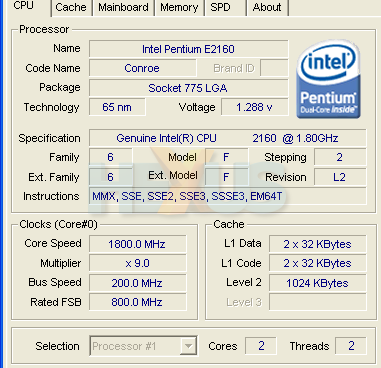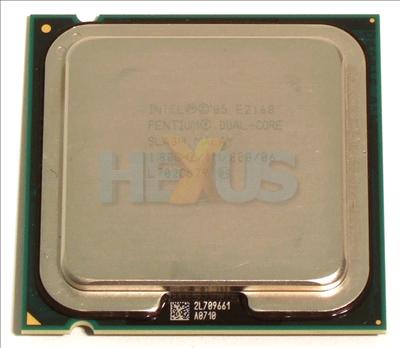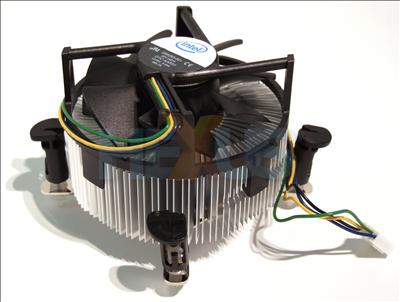Intel Pentium Dual-Core E2160
The words Intel and budget in the same sentence usually implied a wholly castrated processor that was bereft of practically all the performance-enhancing benefits available higher up in the range. Intel had a name for such a puny CPU: Celeron.
Now, though, thanks to the performance advances made by the Core microarchitecture and relatively inexpensive production on a mature 65nm process, a sub-£50 retail processor can provide for a reasonable proxy.
The Celeron of today is the Core-derived Pentium Dual-Core processor. The very name will bring shudders to Intel-lover's hearts, intimating that it's based on the under-performing NetBurst architecture, but that's not the case here, as we shall explain.
The recipe for Pentium Dual-Core goes something like as follows: take the groundbreaking dual-core Core 2 microarchitecture, lop-off half the E6xx0-series Conroe's 4MiB L2 cache and turn it in to the cheaper Core 2 Duo E4x00-series Allendale. Look again and realise that it's still not cheap enough. Lop-off half the Allendale's 2MiB of L2 cache - always an effective method by which to reduce costs - and rename the 1MiB L2-equipped processor as an E21x0-series Pentium Dual-Core.
| Processors | Clock speed | L2 cache (total) | Front-side bus | Voltage | TDP | Process | Price |
|---|---|---|---|---|---|---|---|
| Intel Core 2 Duo E6750 | 2.67GHz | 4MiB | 1333MHz | 1.3V | 65W | 65nm | £110 |
| Intel Pentium Dual-Core E2180 | 2.0GHz | 1MiB | 800MHz | 1.325V | 65W | 65nm | £53 |
| Intel Pentium Dual-Core E2160 | 1.8GHz | 1MiB | 800MHz | 1.325V | 65W | 65nm | £47 |
| Intel Pentium Dual-Core E2140 | 1.6GHz | 1MiB | 800MHz | 1.325V | 65W | 65nm | £42 |
We've thrown in a Core 2 Duo E6750 for good measure, to provide a reference performance guide. The E21xx-series CPUs also miss out on some of the E6x5x Core 2 Duo's feature-set, including Virtualisation Technology and Trusted Execution Technology support. We note that both of these features make greater sense in a workstation environment, so whilst useful, the budget-conscious user shouldn't miss them. The processors slide into any LGA775-supporting motherboard, too.
A retail Intel processor in the HEXUS.labs!
And here's the reference cooler that ships with the PIB model.
Again, decent contact with the core, as evinced by the consistency of the thermal paste.

We've grabbed the E2160 as our budget sample, coming just inside the £50 mark. It runs off an 800MHz FSB, making overclocking a simple task of raising the bus speed until failure. The pricing has moved since testing, we note, and now the E2180 makes for an apples-to-apples comparison with the AMD Athlon X2 BE-2350.

But we get ahead of ourselves. Here's the processor run at its under-load speed. System memory was set to DDR2-800
Overclocking
The processor shipped with 1.325V native operation. We strapped it in to an eVGA nForce 680i SLI motherboard and cranked up the voltage to 1.425V. We noted that all other voltages, apart from memory, are automatically increased as the FSB is raised.
Knowing that the processor is multiplier-unlocked upwards, we inched up the FSB and managed a rock-solid 337.5MHz (1350MHz QDR), giving an overall speed of 3.037GHz. We managed to run a 350MHz FSB (3.15GHz) but the system would fail within the hour.
The FSB:DRAM ratio was altered to 5:6 to provide a DDR2-810 memory speed, too.
Let's now see how the two budget, 64-bit-compatible processors compare against one another, both in terms of stock and overclocked performance.












